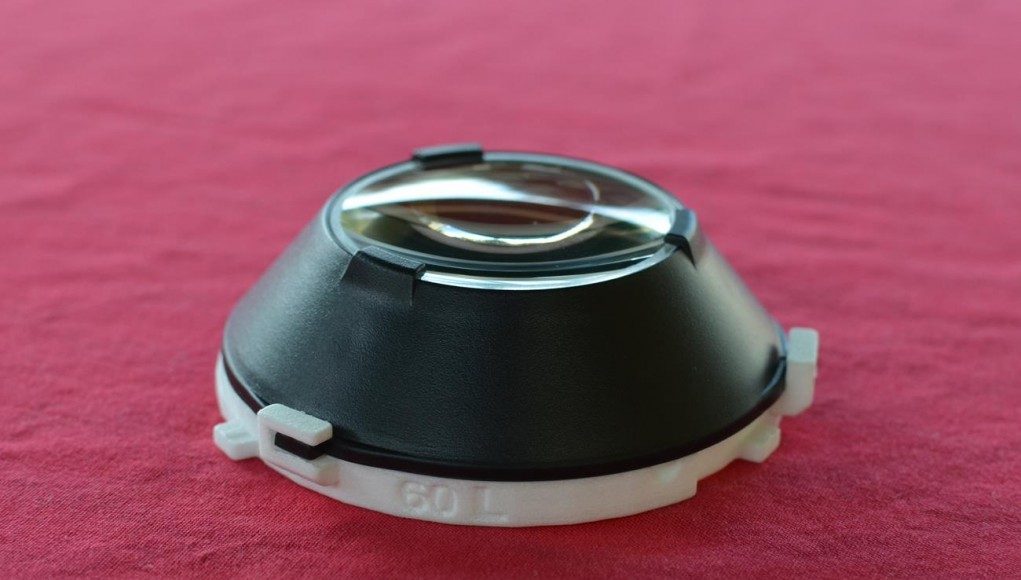After finding out that his 58mm IPD didn’t quite jive with the Oculus Rift’s default 64mm spacing, Barry Hill decided to do something about it. He’s now working on a 3D printed Oculus Rift IPD adapter to change the Oculus Rift’s IPD, which you’ll be able to order with a custom IPD of your choice. We’ve got our hands on a prototype to see how they work.
While the average IPD (interpupillary distance, the distance between your eyes) is somewhere in the neighborhood of 64mm, there are those with an IPD significantly far away from that average. For these people, using the Rift is less comfortable and potentially more blurry, owed to a number of factors caused by the Oculus Rift’s lenses not being centered with their eyes.
After developing a DIY guide to adjusting the Oculus Rift’s IPD, Barry Hill is going one step further. He’s developing 3D printed adapters for the Oculus Rift that can be customized to any IPD between 60mm and 70mm (for those even further outside that range, Hill says that the closer you can get, the more it will improve the image for you, even if it isn’t your exact IPD).
Hill, who has a 58mm IPD, says that “it’s amazing how much better it looks now for me,” when using the adapter.
And they may be able to more than just change the IPD. For one, Hill could customize the VR-Gear IPD Adjuster to fit any prescription level between the Oculus Rift’s A, B, and C cups. For those that may have scratched one of their lenses, an adapter with no change in IPD could be used to adapt a B or C lens to the same focus level of a scratched A lens (or a C lens to the same level as a scratched B lens), thus providing an easy replacement.
The unit, which he’s calling the VR-Gear IPD Adater, will be made available for purchase — printed and sent straight to your home via Shapeways.
Hill is still finalizing the VR-Gear IPD Adapter prototype, but he expects to have it ready for sale in the near future. You can sign up to be notified of when it’s available here.
He was kind enough to send us a prototype of the VR-Gear IPD Adapter to have a look at. The design is akin to two slightly offset circles on top of one another. When attached to the Rift, they shift the lenses 5mm closer together, thus reducing the IPD.
The printing from Shapeways was good enough that I had no issue fitting the lenses into the adapters and the adapters into the Oculus Rift. Hill is continuing to tweak the design for durability and as snug a fit as he can manage.
While my IPD is right near the average (63mm) I had a friend with a 58mm IPD try the 60mm VR-Gear IPD Adapter.
My friend, who may not have been the best subject as he wears glasses and has an astigmatism, told me that his eyes felt less strain with the VR-Gear IPD Adapter and that things might have been clearer, though he wasn’t wearing his glasses during the test. Conversely, with my nearly average IPD, wearing the Oculus Rift with the VR-Gear IPD Adapter added strain to my eyes, as though they were trying harder to align the images — I imagine it’s the same feeling people get whenever they use the Rift with a significantly out of range IPD.
Hill he acknowledges that changing the Oculus Rift’s IPD can introduce distortion and convergence issues. “For me it is still more comfortable than the blur associated with the lenses in the default position,” he said. He says that he’ll outline the potential drawbacks to make sure those interested in the VR-Gear IPD Adapter are aware of them.
The issues are caused by the lenses no longer perfectly aligning with the software-distorted output displayed on the Oculus Rift’s screen. This can be fixed through software, but a lens separation option would need to be exposed by developers. Half-Life 2 already has such an option, and it is planned to be added to Minecrift, the Oculus Rift Minecraft mod.
We’re keeping a close eye on Hill’s VR-Gear IPD Adapter and will be sure to let you know when you can get one of your own!











